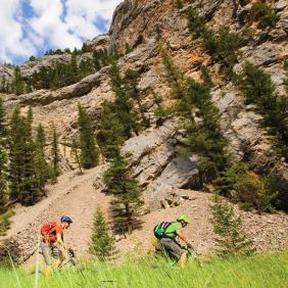 Our friends over in Helena at the Montana Bicycle Guild need your help. We have until Friday to get comments into the Forest Service regarding the Forest Plan. Helena is one of the Montana mountain biking success stories. This fall they were designated an IMBA Silver Level Ride Center. Let's help them keep the momentum going. The Montana Bicycle Guild is trying to make it as easy as possible for people to submit comments on the Forest Service's draft desired conditions document, which is an important part of the Forest Plan revision process. This should only take a couple minutes, so please take the time to submit your comments!! Since the existing Forest Plan was adopted 30 years ago in 1986, this is a once-in-a-generation opportunity to impact our Forest Plan, how its managed, and the trails we ride! The more people that submit comments, the more of an impact we'll have for the future of mountain biking here in Montana. Also, I encourage everyone to forward this to anyone that may want to provide comments, but are either unaware of this or they aren't on our email contact list (and even if someone's already on our email list, it doesn't hurt to forward it to them as a reminder). Important: All comments are due by 5 p.m., next Friday, January 15, 2016!!
1 Comment
Wilderness Management by Hendee, Stankey, and Lucas is a wonderful book written in 1978 outlining the concepts the would shape the USFS management wilderness. The ideas laid out back still resonate today. I can't address the whole book, but it did help me understand some of the core issues related to wilderness early in its evolution, outlined how wilderness cannot be treated separately from the the surrounding forest, and clarified some of the crucial wilderness themes from an administrative perspective. Interestingly, one suggestion they had reflects what I have been attempting to do over the last several posts. "Once wilderness allocation decisions have been made, the extent to which the values espoused by early philosophers like Muir, Marshall, and Leopold are realized will depend on wilderness management. It is essential that mangers, educators, and citizens be guided in their efforts by a personal philosophy of wilderness that recognizes the basic values set forth by these early philosophers." In case you missed the previous posts. Here they are. Aldo Leopold part 1 Aldo Leopold part 2 The Problem of Wilderness - Robert Marshall History of the Wheel Random Quotes When reading the backstory on wilderness"... three consistent wilderness themes - experiential, mental and moral restoration, and scientific..." were seen in all the authors. I'll spare you the whole review. As far as the experiential, I have covered that previously with Leopold and Marshall. Mental and moral restoration is commonly referred to today as our "nature deficit disorder." The latest issue of National Geographic addresses that. I haven't reviewed the scientific themes: watersheds, biodiversity, migration corridors, learning a ecological perspective; but in reviewing the literature it appears that hikers and cyclists have comparable impact. As far as I recall the word mechanized only appears once, and as a synonym for motorized, "Mechanized use, with some minor exceptions (aircraft use where previously established, motor boats in the boundary Waters Canoe Area), is not permitted. But within the range of users permitted by the act, there is considerable diversity with regard to the styles of use and the accompanying facilities and developments." When discussing the threats to wilderness and the nonconforming uses that were being suggested all were either motorized or infrastructure related, "Among the inappropriate alterations and uses currently suggested for many wildernesses are snowmobiling; trail biking; downhill skiing (personal aside, ski lifts would be an example of the type of mechanical transport the act was concerned with); chalets; overnight shelters; comfort stations; and retreats for teaching..." To make sure that trail biking referred to motorized dirt bikes I referenced another article by the lead author, Wilderness Users In the Pacific Northwest. In that same article other concerns included whether wilderness campsites should have have built in fire rings and picnic tables, whether wilderness ranges should be responsible for cleaning campsites, should helicopters be allowed, and concerns that many users believed burying solid trash was acceptable. "But as we will see later, the Wilderness Act and wilderness philosophy makes clear that wilderness is for the use and enjoyment of people." Wilderness Areas cannot be seen in isolation from the surrounding land. To manage wilderness successfully, you need to assess the uses in the surrounding forest. "To preserve wilderness naturalness and solitude requires that demands inconsistent with the area's wilderness character be met elsewhere. Wilderness use is thus interrelated with all other land uses. Many activities and demands are easily diverted to wilderness because there are insufficient opportunities for them on other lands." "In conclusion although wilderness is a discrete part of the environmental spectrum, it is nevertheless linked to other lands. To the extent that these released lands are lacking, the displaced uses may be diverted to classified wilderness where they may result in excessive or inappropriate demands. An expanded range of opportunities for roadless recreation would thus help insure the preservation goals established for the NWPS and help meet the public's diverse tastes and needs. The ultimate quality of the NWPS will depend in part on the provision of alternative (non wilderness) opportunities for activities that do not require the degree of naturalness and solitude provided in classified wilderness." "We believe that providing a full spectrum of natural environments is a desirable and necessary goal to respond to the broad range of tastes and preferences in our society... Included are urban recreation areas, rural countryside, highly developed campgrounds, intensively managed multiple-use forests, National Parks, recreation and scenic areas, roadless wild lands and wilderness." Reiterated through the book is the need for a spectrum of wild backcountry style lands, especially if you want to restrict wilderness use to only a few activities. Unfortunately in most places their advice to build concentric rings of use similar to how the Rattlesnake Recreation Areas surrounds the core wilderness has not been followed, "One commonly suggested possibility is creating a buffer zone - a band of land around the periphery of wilderness that would absorb impacts and help avert conflicts." Even if the philosophy history of wilderness doesn't clearly exclude bikes, and the original interpretation of mechanized transport didn't exclude bikes, it is still clear that there the issue is contentious, with some wilderness purists strongly opposed. "This restriction on permitted recreational and management activity means, then, that wilderness cannot supply the full range of primitive opportunities sought by visitors....And, rather than attempting to provide many different kinds of opportunities under the heading of wilderness, it seems more appropriate to us to have a broadened range of land-use designations at the roadless end of the spectrum." Here in the Bitterroot, the WSAs and RWAs acted unofficially as those other land-use designations, but as the Travel Plan is converting these areas into de facto wilderness, there is no longer a spectrum of roadless acres to accommodate a variety of different uses. Instead the forest is being managed in a binary fashion with nearly 2/3 of the forest being managed as wilderness and de facto wilderness and the remaining 1/3 for logging, motorized use, and everything else. The result is that contrary to the above recommendations, the only local option for primitive opportunities including mountain biking is designated wilderness and the now de facto wilderness, and as a result the full range of opportunities should be managed under the umbrella of wilderness. Before I get into some thoughts on how bikes could and should be managed, I'm going to digress for a moment and share some quotes from another source, Use Patterns and Visitor Characteristics, attitudes and Preferences in Nine Wilderness and Other Roadless Areas. One reason I'm including this is that one of the areas discussed is the Selway-Bitterroot Wilderness and in many ways the description from 1980 hasn't changed significantly. "Some accessible Selway-Bitterroot fringe areas are heavily used by people making short trips. These fringe areas have a number of attractive high lakes and are used much like the smaller areas, but, of course, they are a part of the total large Wilderness." "Second, the abundance of short trips and of 1-day trips in particular implies, I think, a need for more opportunities for hiking, especially, outside of wilderness. There is also a need for other trail-based recreation opportunities outside wilderness, such as horseback riding. Much of this sort of experience could be provided elsewhere, at high levels of quality and visitor satisfaction." Living as I do in the Bitterroot I was struck by the disconnect in their analysis. The assumption being that if there were simply more trails people would hike elsewhere. Yet there are numerous trails outside the wilderness that people simply don't hike, and it was these trails that we tended to ride. The other possible answer to their analysis, one that wasn't considered was; once you designate an area as wilderness and it includes nearly every alpine lake and the most aesthetically pleasing landscapes, don't be surprised if that is where people want to hike, ride horses, and mountain bike, even if other trails are available. 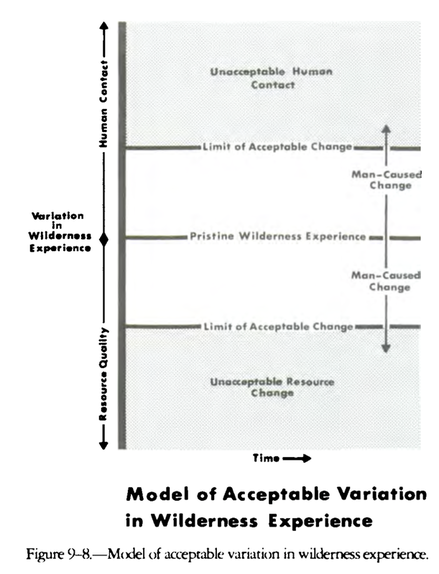 "The real question is not to manage or not to manage but rather how to manage." So if there are no other places to go to experience primitive recreation opportunities, mountain bike access needs to be managed not simply banned. "The diversity of motives and convictions among individuals and groups supporting the wilderness movement has been instrumental to it's success." "The human values and benefits of wilderness are set forth as a management principle because it is so easy to forget that wilderness is not set aside for the sake of its flora and fauna, but for people." "This perspective rests on the idea that because wilderness is prized as the antithesis of urbanization and civilization, compromising its naturalness will ultimately decrease it value to man." "Thus wilderness management is basically concerned with management of human use and influence to preserve natural processes." "The capacity or ability of wilderness to absorb the impacts of use and retain its wilderness qualities is limited." Once the premise that bikes can be an acceptable wilderness use, we need to figure how to manage uses and still maintain the primitive experience we are after. The answer isn't blanket bans, but rather using the minimum amount of regulation to achieve goals, and focusing these regulations on specific sites. "This principle calls for selective restriction - use restrictions should focus on specific impacts of use on the wilderness environment and the wilderness experience of other visitors. It calls for a site specific orientation rather than an across-the-board approach that would impose restrictions everywhere in a wilderness to solve problems that be only local or temporary in nature." "Discrimination against certain types of use ... is based on their respective impacts on the wilderness environment." "The principle of minimum regulation calls for only that level of control necessary to achieve a specific objective." One concept that I hadn't thought before, is the idea that an activity may or may not be wilderness appropriate depending on the style. Once you think about, it really isn't that shocking. Red Bull Rampage or Crankworks are probably not appropriate in wilderness. Machine built flow trails and jump lines probably not; but what about bike packing or hunting? Is hauling out an elk by bike all that different that on a pack horse? Whether the pack is on your back or on your frame, aren't the goals solitude, adventure, exploration the same? Clearly these style of mountain biking are wilderness dependent. "Defining an activity as wilderness-dependent can be difficult. If then an activity itself is not dependent ,but the particular style or form in which it is pursued might be. For example...fishing can be pursued in a variety of settings, certain styles of fishing might be dependent upon wilderness for their enjoyment. Fishermen who desire remote, difficult-to-reach lakes where one can fish under natural conditions without meeting many other people must rely on wilderness for such opportunities." "Thus favoring wilderness -dependent activities might call for reducing or discouraging - rather than eliminating - certain forms of some activities... The key to favoring wilderness-dependent activities in classified wilderness is the availability of alternative non-wilderness lands to which inappropriate activity can be diverted." In summary, as more roadless backcountry primitive lands that have a history mountain bike use fall under the auspices of the wilderness preservation system, the broad range of backcountry areas recommended in the book will no longer exist. The consequence is that wilderness areas will inevitably need to support the full spectrum of backcountry uses, some of which like bikes are currently excluded. As mountain bikers we need to accept that there is and will continue to be opposition. The key is to incorporate established wilderness management protocols into our plans and advocacy. Trails need to stay primitive.If a trail is popular with backpackers, maybe that is a trail that should have restrictions. In many Wilderness areas, 20 -30 % of trails get the vast majority of the use. We need to disperse our use to less popular minimally used trails. Wilderness in a Balanced Land Use Framework
Senator Frank Church, 1977 "... it was not the intent of Congress that wilderness be administered in so pure a fashion as to needlessly restrict their customary public use and enjoyment. Quite to the contrary, Congress fully intended that wilderness should be managed to allow its use by a wide spectrum of Americans ... The Wilderness Act was not deliberately contrived to hamstring reasonable and necessary management activities ... restrictions on use may sometimes be needed to protect especially fragile locations. But in adopting regulations, common sense is required. In summary if purity is to be an issue in the management of wilderness, let it focus on preserving the natural integrity of the wilderness environment- and not needless restriction of facilities necessary to protect the area while providing for human use and enjoyment." |
AuthorLance Pysher Archives
September 2017
CategoriesInstagram |
||||||
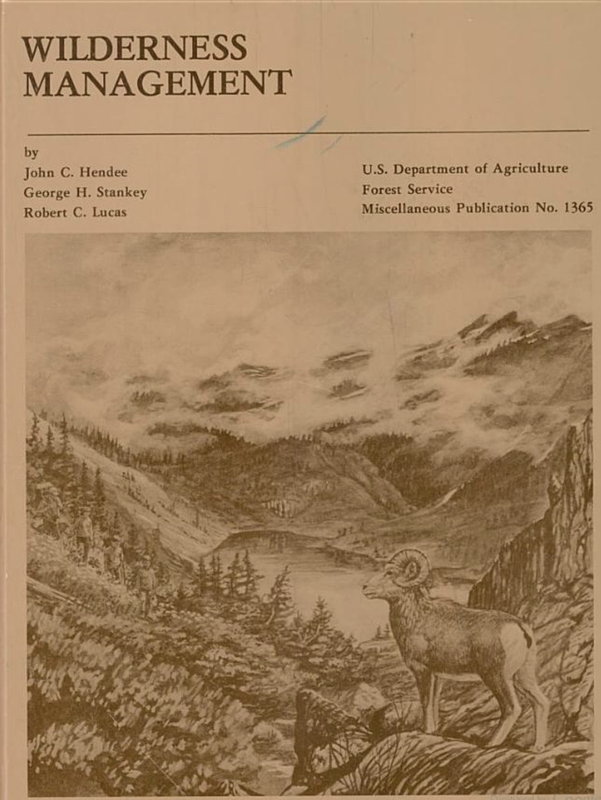
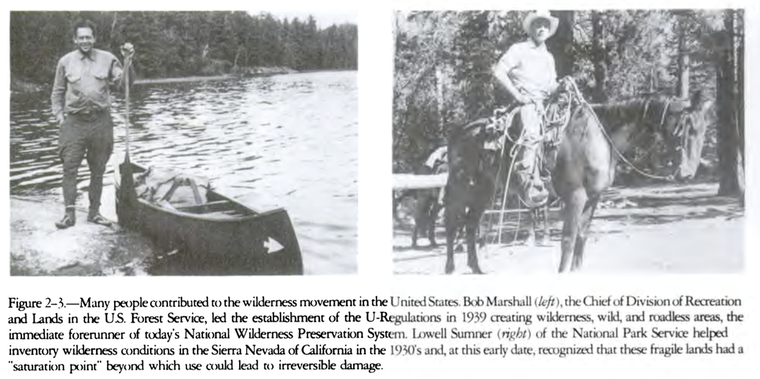
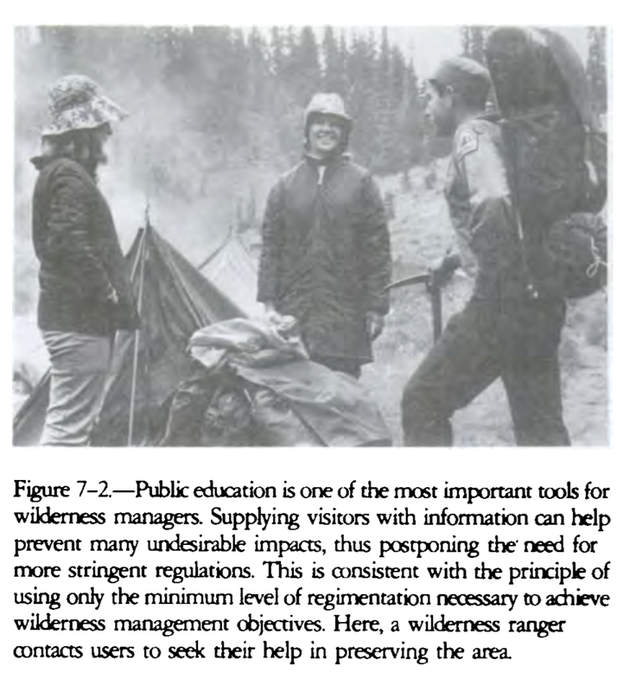
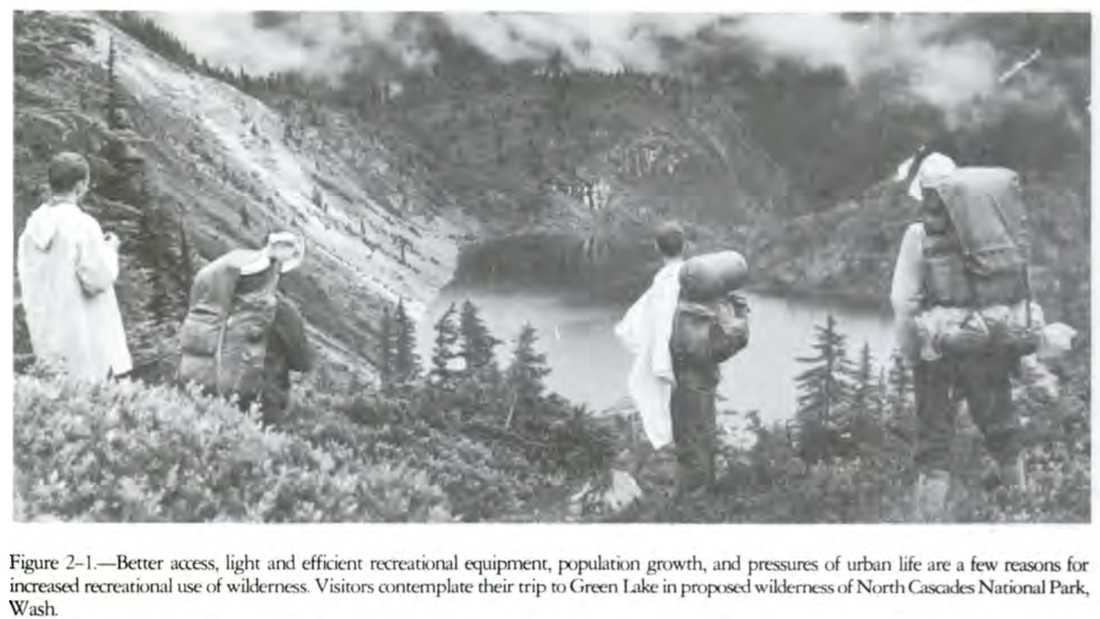
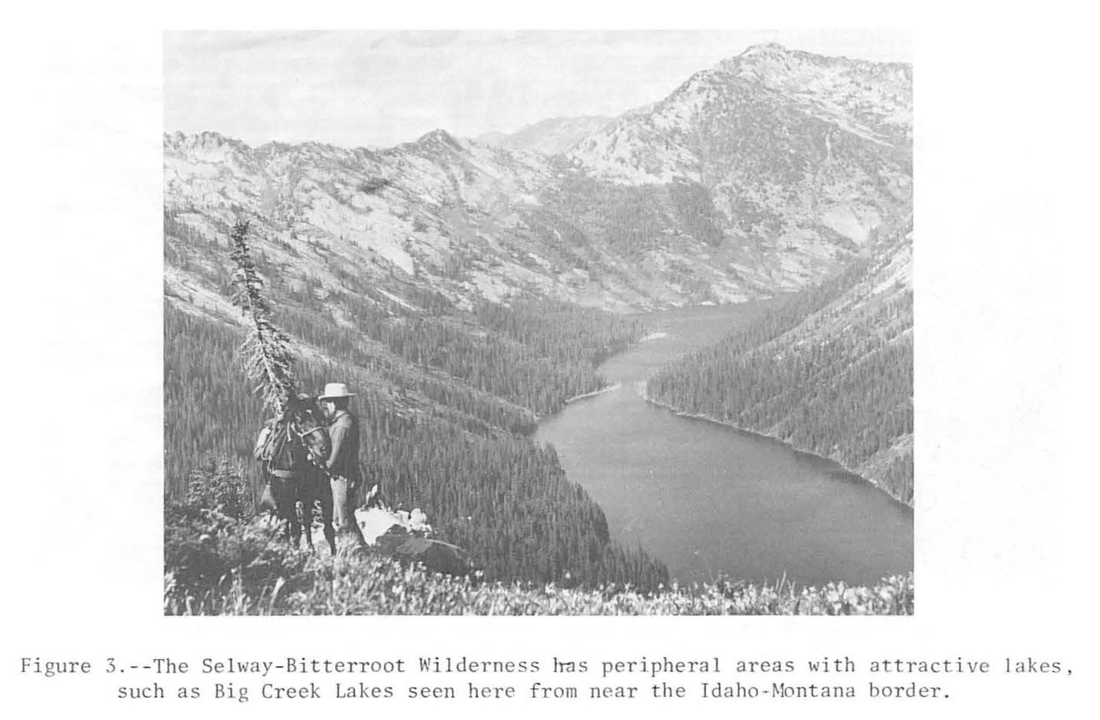
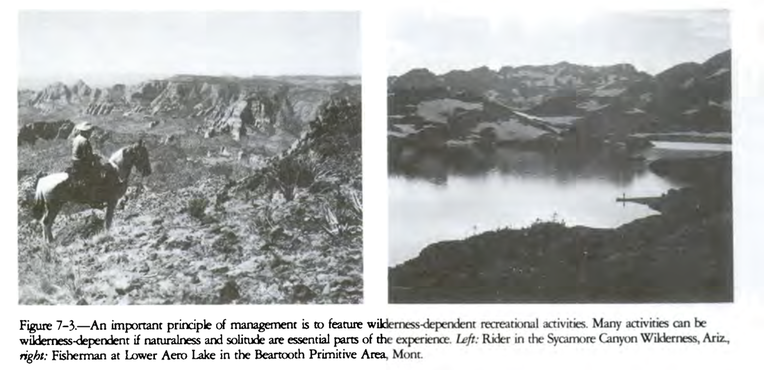
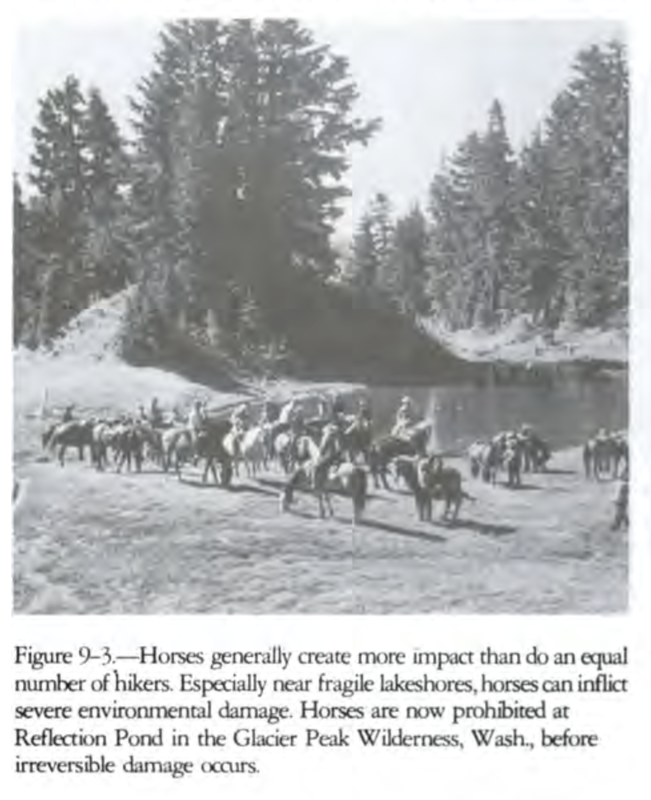
 RSS Feed
RSS Feed